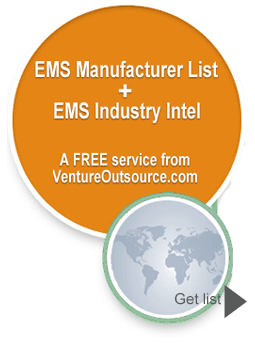According to investment bank Lincoln International, there were 13 completed transactions in the first quarter of 2008, compared to 12 in the last quarter and 14 in the first quarter of 2007.
EMS consolidations decreased from six transactions in the last quarter of 2007, or 50 percent of transactions, to five transactions in this quarter, or 38 percent of transactions. OEM divestitures decreased from four in the last quarter to one in the first quarter of 2008. OEM divestitures represented 8 percent of total transactions.
EMS divestitures were steady with no transactions in the first quarter of 2008 as well as the last quarter of 2007 (excluding pending transactions).
In Q1 2008 there was one transaction that was included in the private equity investment category compared to two in Q4 2007. Private equity investments represented 8 percent of total transactions in Q1 2008.
Only 8 percent of the deals in Q1 2008 were cross border, the lowest percentage in over two years. Within this category, the only transaction was between a high-cost region and a low-cost region. In comparison, three of the transactions in Q4 2007 were between high-cost regions and three were from high-cost regions to low-cost regions.
For Q1 2008, four transactions occurred within the U.S./Canada region compared to one in Q4 2007. Six of the closed transactions in the first quarter of 2008 occurred within Western Europe, the highest total since we began tracking this data, and two occurred within Asia. Transactions for the quarter were led by the Micro Tier (below $150 million in revenue), totaling seven. Large Tier (greater than $3 billion in revenues) EMS companies closed only one transaction.
There were five Mid Tier ($300 million to $1 billion in revenue) transactions and no Small Tier ($150 million to $300 million) transactions.
Terms and turns: revisiting cash cycle conversions
The cash cycle is calculated by adding days sales outstanding (DSO) and days inventory outstanding (DIO) and subtracting from this sum days payable outstanding (DPO). The financial statistic is used to measure how quickly a company can turn sales into cash.
There are two basic disciplines in managing cash cycle: 1) contractual terms with vendors and customers, and 2) inventory turns. Due to the fact that the electronic manufacturing services (EMS) industry is very material intensive, inventory management is the most important factor in achieving cash cycle improvements.
In the Large Tier, two of the companies’ cash cycles improved (fewer days) while three companies’ cycles lengthened.
Large Tier performance
Celestica improved 12 percent to 34.7 days from 39.4 in Q1-2007 due to higher DPO and lower DIO.
Sanmina-SCI’s cash cycle improved from 42.5 days to 36.5 because of higher DPO and lower DSO.
Jabil Circuit saw their cash cycle go from 22.2 days to 24.7, 11 percent higher, due to higher DIO.
For the second year, Flextronics’ cash cycle lengthened, this year from 13.4 days to 24.7, an 85 percent increase, because of an increase in both days sales outstanding and days inventory outstanding. Elcoteq’s cash cycle increased slightly from 8.5 days to 8.6, a 1 percent rise, because of slightly higher DIO.
Get list of EMS manufacturers for your requirements (Its free)
Save time and money. Find quality EMS manufacturers. Fast. Venture Outsource has a massive, global database of contract electronic design and manufacturing capabilities. Speak with a Provider Advisor.
“Was able to very quickly find details on the important elements of setting up EMS and ODM partnerships, talked with an advisor for personalized info on quality providers matching our requirements while getting up to speed quickly about the industry and connect with key staff from like-minded companies and potential partners. Great resource.”
— Jeff Treuhaft, Sr. Vice President, Fusion-IO
Advisors tell you matches we find for your needs, answer your questions and, can share EMS industry knowledge specific to your industries and markets.







